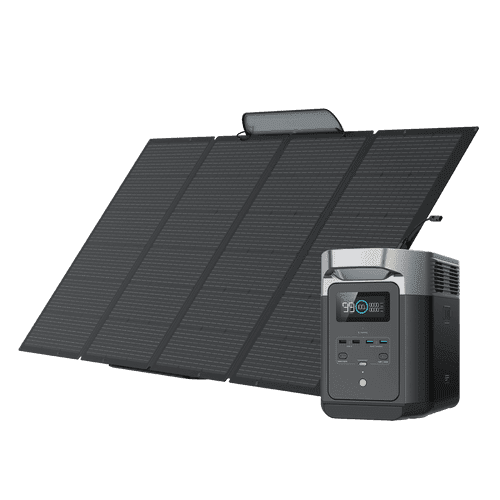Recent data shows that portable power station accidents have increased by 35% in the last two years, highlighting a critical need for enhanced safety awareness. As our reliance on portable energy solutions grows, many users find themselves caught between the convenience of these devices and concerns about their safety. Common issues like overheating during charging and improper usage patterns have led to preventable incidents, causing property damage and personal injury.The emergence of Lithium Iron Phosphate (LFP) technology marks a revolutionary breakthrough in power station safety, offering inherent stability and enhanced protection against thermal events. Leading manufacturers like EcoFlow have pioneered the integration of LFP technology with advanced Battery Management Systems (BMS) and smart charging capabilities. This article explores essential safety measures for portable power stations, from understanding fundamental risks to implementing practical safety protocols.
Understanding Power Station Safety Risks
Power station safety begins with recognizing potential hazards that can compromise both the device and user safety. Thermal runaway, a critical concern in portable power stations, occurs when internal battery temperatures spiral out of control, potentially leading to fires or explosions. This risk increases significantly when devices are exposed to direct sunlight or confined spaces with poor ventilation.
Battery degradation through improper charging practices presents another significant risk. Consistently overcharging batteries beyond their recommended capacity or allowing them to completely discharge can permanently damage cells and create unstable conditions. Similarly, charging or operating units in extreme temperatures—below freezing or above 104°F (40°C)—stresses battery components and accelerates wear.
Physical impacts during transportation pose often-overlooked dangers. Even minor drops can damage internal components, potentially creating short circuits or compromising safety systems. Users should always secure units during transport and inspect for external damage before operation. Additionally, moisture exposure from rain or high humidity environments can corrode connections and trigger electrical malfunctions.
Charging source compatibility issues represent a growing concern as users connect power stations to various power sources. Using non-certified charging equipment or exceeding input voltage specifications can bypass built-in protection systems. This is particularly relevant when connecting solar panels, where voltage fluctuations and improper wiring can create dangerous conditions. Understanding and respecting device specifications becomes crucial for preventing these safety risks.
LFP Battery Technology: Your Safety Shield
Lithium Iron Phosphate (LFP) technology represents a significant advancement over traditional lithium-ion batteries in portable power stations. While conventional lithium-ion cells use cobalt-based cathodes that can become unstable at high temperatures, LFP’s unique chemical structure provides inherent resistance to thermal events. This fundamental difference translates to superior safety performance in real-world applications.
At the core of LFP safety is an advanced Battery Management System (BMS) that continuously monitors cell voltage, current, and temperature. This sophisticated system acts as a vigilant guardian, preventing overcharging and maintaining optimal operating conditions. The BMS can instantly disconnect power if it detects any anomalies, providing multiple layers of protection against potential hazards.
Why LFP Excels in Power Station Safety
LFP chemistry demonstrates remarkable thermal stability, maintaining safe operation even under extreme conditions that would compromise traditional batteries. The phosphate-based cathode material remains stable up to 140°F (60°C), significantly reducing the risk of thermal runaway events. This stability extends to physical stress scenarios, where LFP cells show superior resistance to impact and puncture damage.Beyond immediate safety benefits, LFP technology offers environmental advantages through the elimination of toxic heavy metals like cobalt. This safer chemical composition not only protects users but also simplifies disposal and recycling processes. Combined with an impressive cycle life exceeding 3,500 charges, LFP technology provides long-term reliability while maintaining consistent safety performance throughout its operational lifetime.
Safe Charging Options and Protocols
Understanding different charging methods is crucial for power station safety. AC charging, while convenient, requires careful attention to outlet compatibility and load capacity. Solar charging offers sustainable benefits but demands proper panel alignment and weather consideration. Car charging serves as a reliable backup but needs appropriate voltage monitoring to prevent vehicle battery drain.Temperature management during charging is paramount, with optimal ranges typically between 50°F and 86°F (10°C to 30°C). When charging multiple devices simultaneously, users must calculate total power draw to prevent system overload. Smart load distribution helps maintain stable charging temperatures and extends battery life.
Step-by-Step Safe Charging Guide
Before charging, inspect cables for damage and ensure ventilation around the unit. Check connection points for debris or moisture, and verify that charging ports are clean and dry. Position the power station on a flat, stable surface away from direct sunlight and heat sources.During charging, monitor the unit’s temperature and charging progress through the display panel or app interface. Watch for unusual sounds, smells, or error messages that may indicate problems. If using solar panels, adjust their position throughout the day to maintain optimal charging efficiency while avoiding overheating.After charging completes, allow the unit to cool before storage. Store in a temperature-controlled environment between 68°F and 77°F (20°C to 25°C). Keep the charge level between 50% and 80% for long-term storage to maximize battery longevity and maintain safety standards.
Maximizing Energy Efficiency Safely
Optimizing energy efficiency directly contributes to safer power station operation by reducing heat generation and system stress. Smart power management settings, when properly configured, create a balance between performance and safety. Users can activate ECO mode during low-demand periods, which not only extends battery life but also maintains lower operating temperatures. The system automatically adjusts output levels based on connected devices, preventing unnecessary strain on components.Real-time monitoring through dedicated mobile apps provides crucial safety advantages. Users receive instant notifications about temperature fluctuations, unusual power draws, or potential system anomalies. The app dashboard displays detailed power flow metrics, helping identify inefficient device connections or charging patterns that could compromise safety. By tracking historical usage data, users can optimize their power consumption habits while maintaining safe operating parameters.Advanced scheduling features enable users to automate charging cycles during optimal temperature periods, typically during cooler nighttime hours. This strategic approach to energy management reduces thermal stress on battery cells while maximizing charging efficiency. Combined with intelligent load distribution, these practices ensure consistent performance without pushing the system beyond safe operational limits.
Essential Safety Guidelines for Modern Power Solutions
The evolution of power station safety through LFP technology and advanced protection systems marks a significant milestone in portable energy solutions. By understanding and implementing proper safety protocols, users can confidently harness the full potential of their power stations while minimizing risks. The combination of LFP’s inherent stability, sophisticated Battery Management Systems, and smart charging technologies creates multiple layers of protection against common hazards.Remember these essential safety practices: always inspect equipment before use, maintain proper ventilation during charging, monitor temperature levels, and utilize smart features for optimal performance. These steps, combined with LFP technology’s built-in protections, provide a robust foundation for safe, reliable portable power.Take action today by implementing these safety protocols in your power station usage routine. Regular maintenance checks, proper storage practices, and adherence to charging guidelines will help ensure years of safe operation. With these measures in place, you can confidently rely on your power station while maintaining the highest safety standards.



